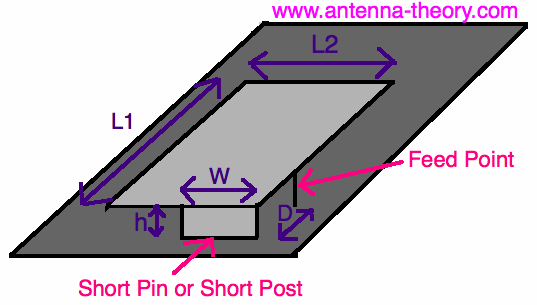PauloF91
Newbie level 4

- Joined
- Jun 18, 2013
- Messages
- 7
- Helped
- 0
- Reputation
- 0
- Reaction score
- 0
- Trophy points
- 1
- Activity points
- 65
Hello,
my problem is as simple as it can be. I just wanna design a PIFA shorting Pin. I'm starting to study antennas, I'm really new at this.
I'm aware of wavelength formula,if I got my L1 + L2 to be a quarter wavelength, I got it resonant to my frequency, is that right? I find it too easy and insanely small.
f = 2,4Ghz -> wavelength/4 = C / ( 4 * f * sqrt(Er) ) = 14.9 mm
So, L1 + L2 = 14.9 mm.
And, can I really follow this layout?

And btw, I'm following Ansoft HFSS Antenna Design Kit, I'm starting from there. If I implement it for this frequency, once I run "Analize all" my resonant frequency appears as around 7Ghz (more or less) instead of my 2,4Ghz, can someone guess why? I got substrate properties done right.
Thanks in advance.
my problem is as simple as it can be. I just wanna design a PIFA shorting Pin. I'm starting to study antennas, I'm really new at this.
I'm aware of wavelength formula,if I got my L1 + L2 to be a quarter wavelength, I got it resonant to my frequency, is that right? I find it too easy and insanely small.
f = 2,4Ghz -> wavelength/4 = C / ( 4 * f * sqrt(Er) ) = 14.9 mm
So, L1 + L2 = 14.9 mm.
And, can I really follow this layout?

And btw, I'm following Ansoft HFSS Antenna Design Kit, I'm starting from there. If I implement it for this frequency, once I run "Analize all" my resonant frequency appears as around 7Ghz (more or less) instead of my 2,4Ghz, can someone guess why? I got substrate properties done right.
Thanks in advance.

